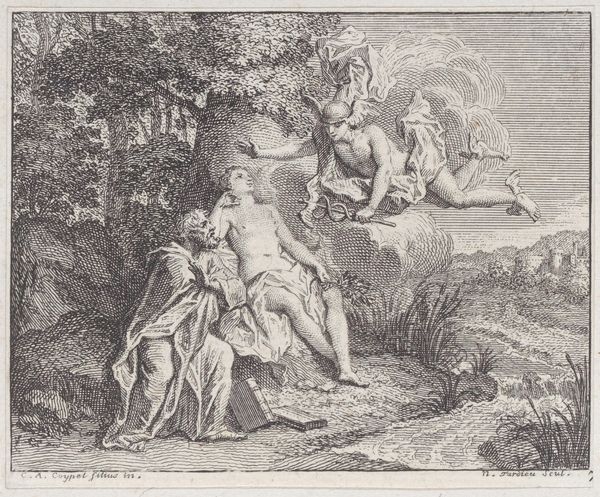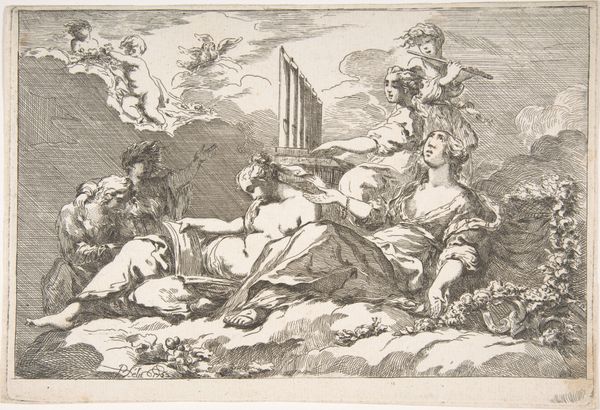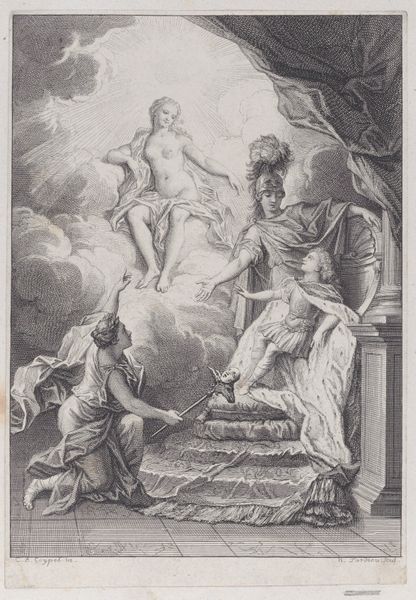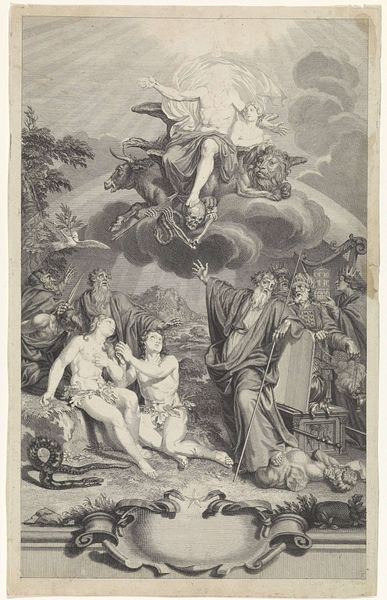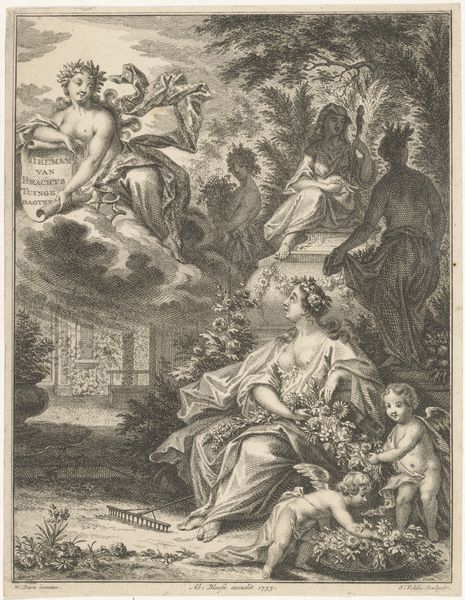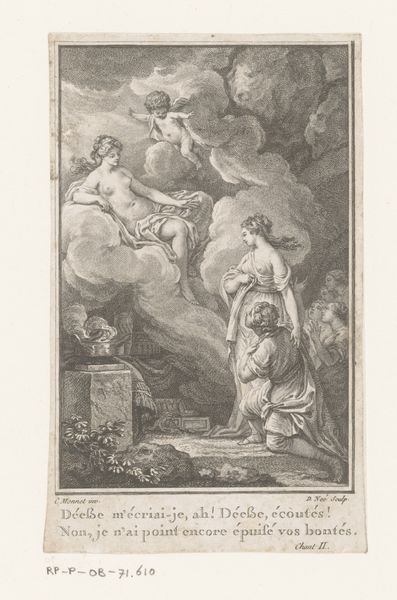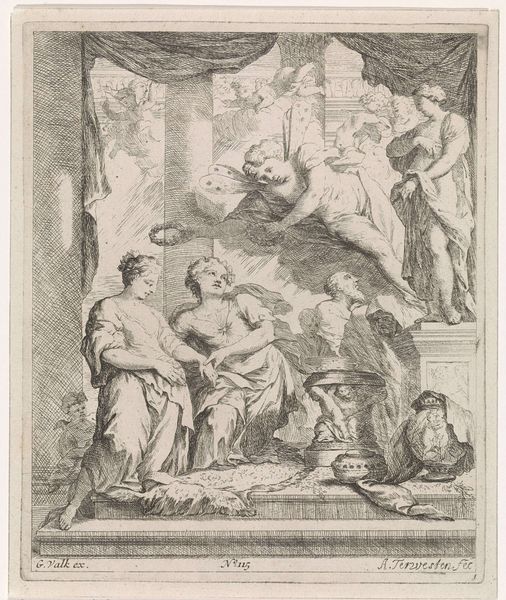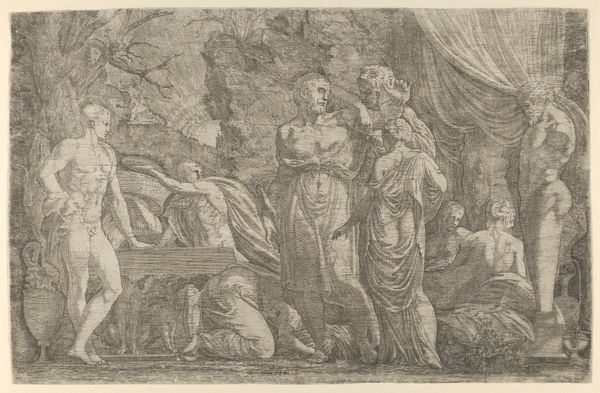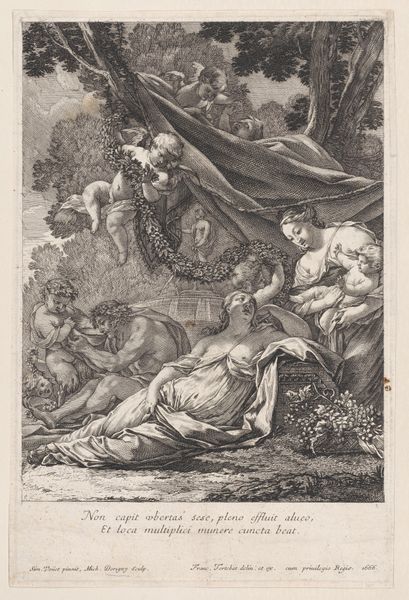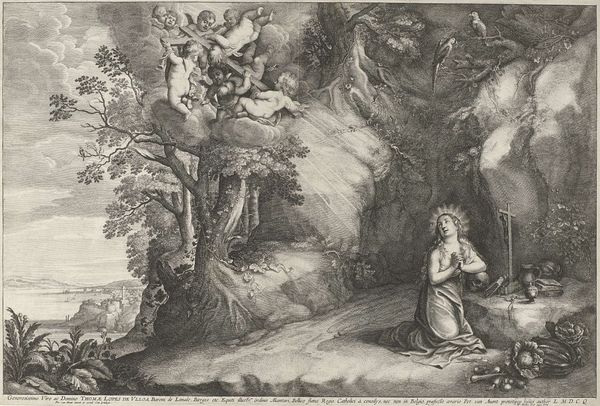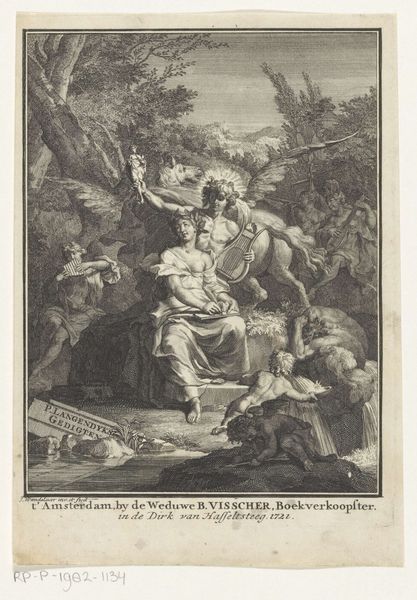
drawing, print, engraving
#
drawing
#
allegory
#
baroque
# print
#
classical-realism
#
figuration
#
line
#
history-painting
#
engraving
Dimensions: Sheet (Trimmed): 3 1/8 × 3 13/16 in. (8 × 9.7 cm)
Copyright: Public Domain
Nicolas Henry Tardieu created this print, Pluto and Proserpina, in the early 18th century. Its themes of abduction and negotiation, rendered in the visual language of classical mythology, speak to the social and political landscape of France at that time. The image presents a familiar story, but its meaning would have resonated differently depending on the viewer's position within the rigid social hierarchy of the era. For the aristocracy, well-versed in classical literature and art, it reinforced their cultural authority. For the burgeoning middle class, such imagery might have represented aspirations towards social mobility and cultural refinement. This print also tells us about the institutional role of art in 18th century France. It reproduces a fable by La Fontaine, whose work was endorsed by the Académie Française. The fable itself critiques courtly power, but the imagery of this print softens its impact, creating an image of harmony and negotiation. The interpretation of art is contingent on social and institutional context. By examining the culture of 18th-century France, and institutions like the Académie Française, we can better understand this print's complex relationship to the society that produced it.
Comments
No comments
Be the first to comment and join the conversation on the ultimate creative platform.
